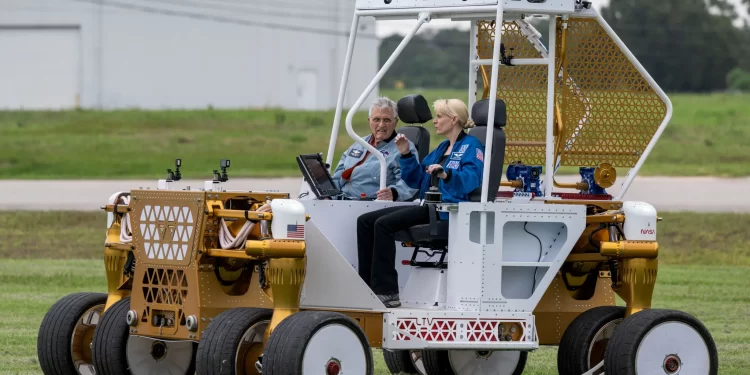As NASA prepares for its first crewed lunar mission in over 50 years, the space agency has introduced a cutting-edge prototype of a lunar rover, one that surprisingly resembles vehicles commonly seen on Earth. Despite its appearance, this new model is far more than just a familiar design; it is set to play a pivotal role in the upcoming Artemis missions.
Paving the Way for Lunar Exploration
At NASA’s Johnson Space Center in Houston, Texas, the Ground Test Unit (GTU) is currently under development, designed to simulate future rover operations on the Moon. While this particular rover will never leave Earth, it serves as an essential testing tool to refine rover capabilities and mission planning.
Notably, the GTU has already been driven by high-profile astronauts such as Kate Rubins, the first person to sequence DNA in space, and Harrison “Jack” Schmitt, the Apollo 17 pilot-turned-senator. The images of the test drives reveal a rover that looks like a cross between a tractor and a golf cart, raising curiosity about its unique design.
Collaborating with Private Industry for Innovation
Although the design may seem unorthodox, NASA’s collaboration with private companies has a strategic purpose. Earlier this year, NASA partnered with three private firms — Intuitive Machines, Lunar Outpost, and Venturi Astrolab — to develop key components for the GTU. This partnership allows NASA to leverage innovative ideas while maintaining rigorous standards for lunar exploration.
“The Ground Test Unit allows our teams to understand rover operations under simulated lunar conditions, ensuring we make informed decisions about the final design,” said NASA engineering lead Jeff Somers. “It helps us optimize future lunar terrain vehicles before they’re sent to the Moon.”
Designed to carry two astronauts, the GTU also has the potential for remote operation, which could revolutionize how astronauts interact with rovers. In fact, the technology is reminiscent of self-driving cars, offering a glimpse into the future of autonomous lunar exploration.











